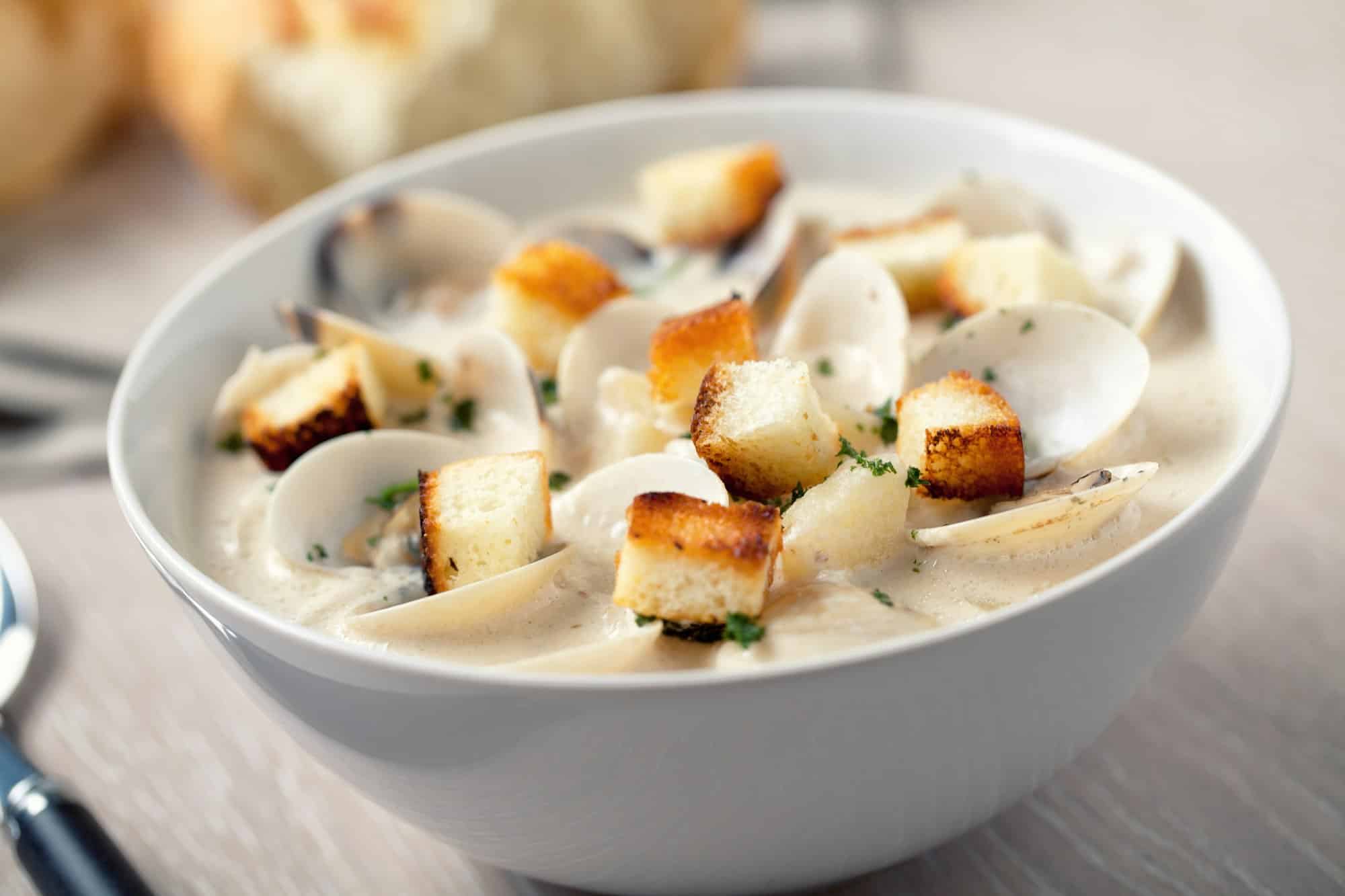What’s the Key to a Perfectly Creamy Gourmet Clam Chowder with Fresh Herbs?

Clam chowder is a classic dish that has been a staple in New England cuisine for centuries. This creamy, hearty soup is filled with fresh clams, potatoes, and often adorned with a sprinkle of crispy bacon on top. Packed with savory seafood flavor, it’s a comfort food that is not only filling but also downright delicious. If you’ve ever been curious about how to make this mouthwatering dish, we’re about to take you on a culinary journey with this comprehensive guide.
Selecting and Prepping Your Clams
The first and most crucial step to making an excellent clam chowder is selecting and preparing your clams. Fresh clams are paramount. They bring a distinct, authentic flavor to the soup that canned clams can’t quite match. When choosing clams, look for ones that are tightly closed, or that close when you tap them. This signifies that the clams are alive and fresh.
A découvrir également : What’s the Secret to Crafting the Perfect Japanese Matcha Roll Cake?
Once you’ve acquired your clams, you’ll need to clean them. Clams live in the sand and can be quite gritty. To clean them, soak the clams in a mixture of 1/3 cup salt to 1 gallon of water for about 20 minutes. This allows the clams to expel any sand. After this, scrub the clams with a stiff brush under cold running water to remove any remaining dirt.
Crafting Your Chowder Base
When it comes to crafting a clam chowder base, you must begin with bacon. The bacon not only provides a smoky flavor that enhances the seafood, but it also contributes a luxurious mouthfeel to the soup. Start by cutting up a few strips of bacon into small pieces, then heat them in your pot until crispy. Remove the bacon but leave the fat, which will be used to sauté the vegetables.
A découvrir également : How to Make a Traditional Spanish Paella with Rabbit and Snails?
The foundation of your chowder base will consist of onions, celery, and potatoes. Sauté them in the bacon grease until they’re soft. This process helps to marry the flavors and add depth to the chowder.
Making the Chowder Creamy
To achieve the desired creaminess in your clam chowder, you’ll need to add cream. However, the use of cream alone can result in a soup that’s too thick or too rich. For a balanced, creamy texture, use a combination of half-and-half and whole milk. This combo provides the right amount of richness without becoming overpowering.
After adding the dairy, it’s time to introduce the clams to the pot. You’ll want to cook them just until they open. This ensures they remain tender and juicy. Once the clams have opened, remove them from the pot and reserve the liquid.
Seasoning Your Chowder
A well-seasoned chowder is a flavorful chowder. Add in your clam juice (the liquid you reserved earlier), bay leaves, and thyme. These ingredients will infuse your chowder with an earthy, aromatic quality that enhances the overall flavor of the soup.
Taste the chowder as it simmers and adjust the seasoning as needed. Remember, it’s easier to add more seasoning than to take it away, so start with a light hand and add more as needed.
The Final Touches
Once your chowder has simmered for a good 30 minutes, it’s time for the final touches. Return the clams and the cooked bacon to the pot. Stir everything together to combine the flavors. You’ll want to let the soup simmer for another few minutes to ensure everything is heated through.
The perfect clam chowder is creamy, hearty, and loaded with fresh clams. It’s a dish that is deeply rooted in New England cooking traditions and is a testament to the region’s abundant seafood. With the help of this guide, you’ll be able to recreate this classic recipe at home with ease.
Serving Your Gourmet Clam Chowder
After all the preparation and cooking, it’s finally time to serve your gourmet clam chowder. How you present your clam chowder can make a difference to the overall dining experience. For an authentic New England touch, you can serve your clam chowder in a bread bowl. This not only makes for an impressive presentation, but it also allows you to savor every last bit of your delicious clam chowder by eating the bowl itself!
On the other hand, if you want to keep it simple, you can serve your clam chowder in a regular soup bowl. But don’t forget the toppings! Classic toppings for clam chowder include a sprinkle of fresh parsley, extra bacon bits, and oyster crackers. The parsley adds a fresh note to balance the richness of the chowder, while the extra bacon bits contribute an additional layer of smokiness and crunch. Oyster crackers, on the other hand, give an enjoyable contrast of texture as they slowly absorb the chowder’s creamy goodness.
Pair your clam chowder with a glass of white wine. The acidity of the wine cuts through the soup’s creaminess, making each spoonful as delightful as the first.
Remember, a good clam chowder should be served hot. You want the heat to bring out all the flavors, from the sweet clams to the smoky bacon and aromatic herbs. So ensure your chowder stays warm from the stovetop to the dinner table.
Conclusion: A True Taste of New England
Creating a perfectly creamy gourmet clam chowder with fresh herbs may seem like a daunting task, but with careful selection of fresh clams, meticulous preparation, and patience, the result is a heartwarming, flavorful dish that is truly a taste of New England.
The journey to making a clam chowder is not just about following a recipe. It’s about understanding and appreciating the ingredients, the process, and ultimately, the gastronomic heritage it represents. Each spoonful of clam chowder is a tribute to New England’s rich maritime history, a celebration of its abundant seafood, and an invitation to partake in its culinary tradition.
So whether you’re cooking for a crowd, preparing a meal for a special occasion, or simply craving a warm, comforting bowl of soup, remember that making a clam chowder is not just about the end product. It’s about the journey, the joy of cooking, and the love you put into every pot.
With this guide, you’re now equipped to make your own clam chowder. So put on your apron, gather your ingredients, and embark on your own New England clam chowder cooking adventure. And remember, the key to a perfectly creamy clam chowder is in the details – the selection of fresh clams, the preparation of the ingredients, the slow and thorough cooking process, and the final touches that bring everything together. Happy cooking!
